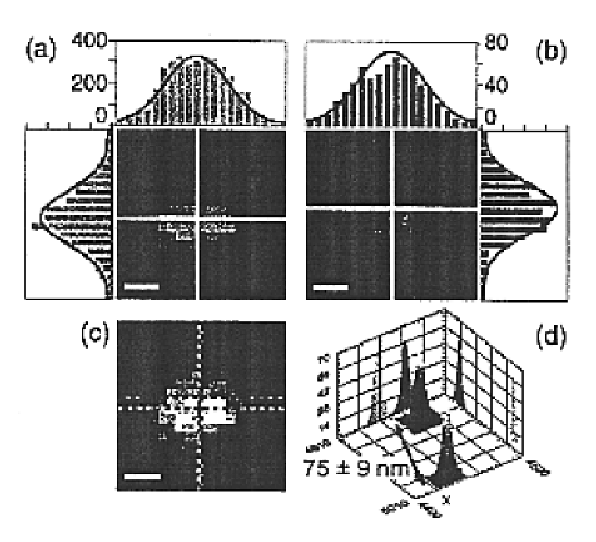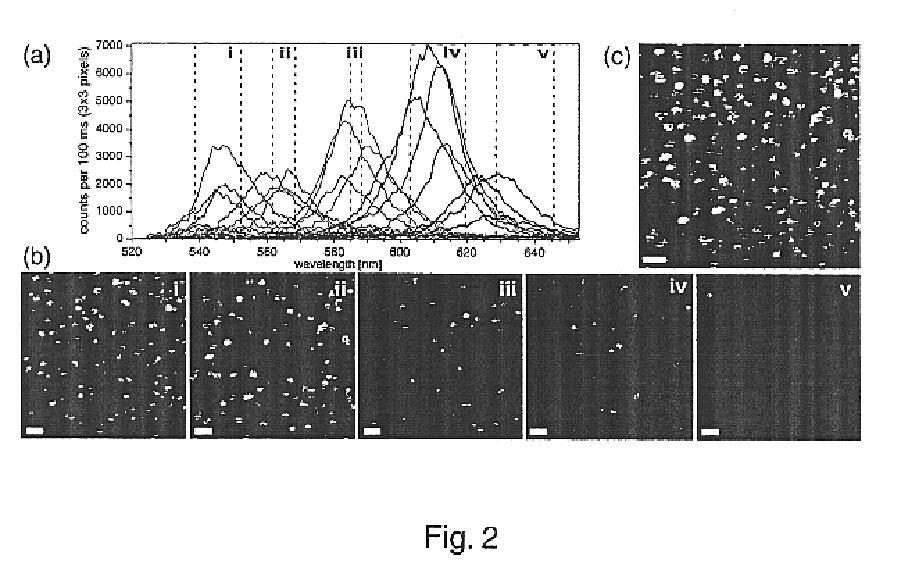Ultrahigh resolution multicolor colocalization of single fluorescent probes
a fluorescent probe and multi-color technology, applied in the field of ultra-high-resolution multi-color colocalization of single fluorescent probes, can solve the problems of requiring subsequent signal processing, each method has particular limitations, and the deconvolution algorithm does not have unique solutions, so as to improve the spatial resolution of optical microscopy, the effect of limited ability to compensate for aberrations and demanding operation
- Summary
- Abstract
- Description
- Claims
- Application Information
AI Technical Summary
Benefits of technology
Problems solved by technology
Method used
Image
Examples
Embodiment Construction
The instant invention contemplates a method for the colocalization of two or more species of interest in a sample comprising:a) exciting the species of interest with a single wavelength of light thereby causing the two or more species of interest to emit light of a distinctive emission characteristic,b) separating the distinctive emission characteristics of the two or more species of interest,c) detecting the emitted light from the two or more species of interest,d) moving the sample a predetermined distance,e) repeating steps a) through d) a predetermined number of times thereby creating a multitude of representations of the excitation point spread function (PSF),f) determine the geometric center of the representations of the excitation PSF for at least two of the species of interest,g) computing the distance between the geometric centers of the representations of the excitation PSF for the species of interest.
The detection of the emitted light from the two or more species may be a...
PUM
| Property | Measurement | Unit |
|---|---|---|
| Distance | aaaaa | aaaaa |
| Distance | aaaaa | aaaaa |
| Lifetime stability | aaaaa | aaaaa |
Abstract
Description
Claims
Application Information
 Login to View More
Login to View More - R&D
- Intellectual Property
- Life Sciences
- Materials
- Tech Scout
- Unparalleled Data Quality
- Higher Quality Content
- 60% Fewer Hallucinations
Browse by: Latest US Patents, China's latest patents, Technical Efficacy Thesaurus, Application Domain, Technology Topic, Popular Technical Reports.
© 2025 PatSnap. All rights reserved.Legal|Privacy policy|Modern Slavery Act Transparency Statement|Sitemap|About US| Contact US: help@patsnap.com



